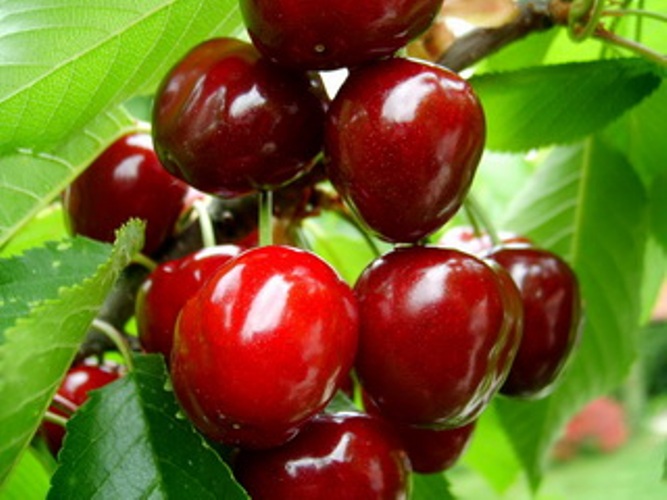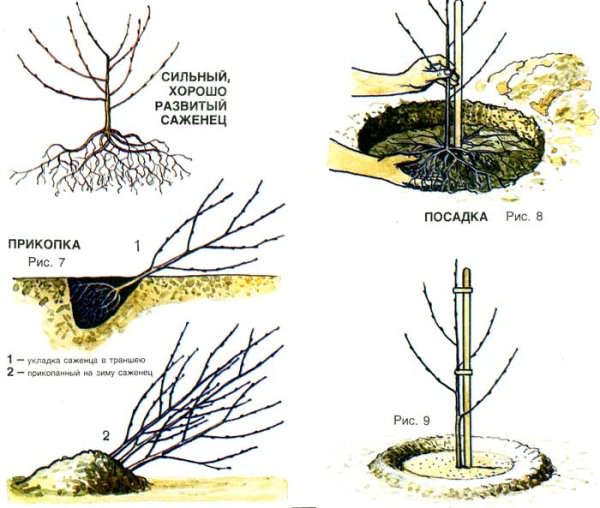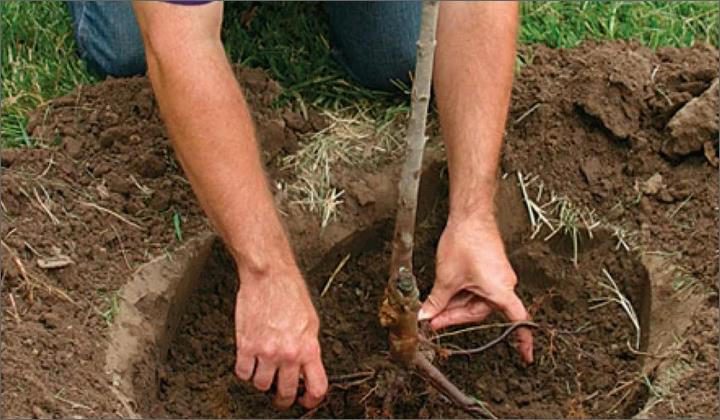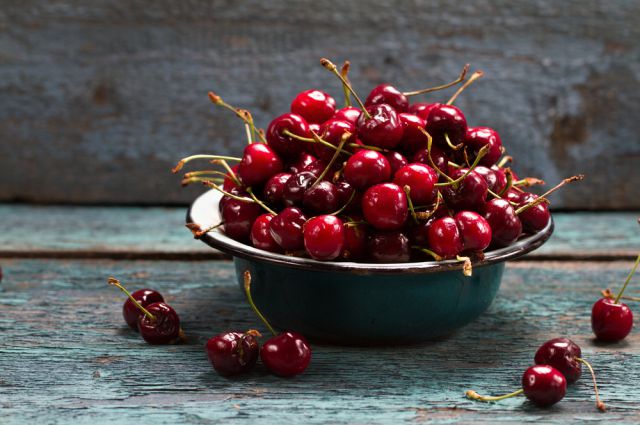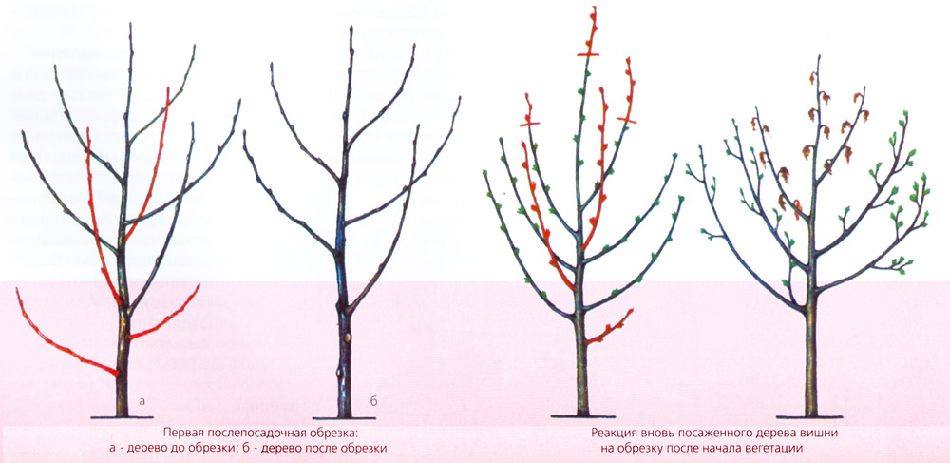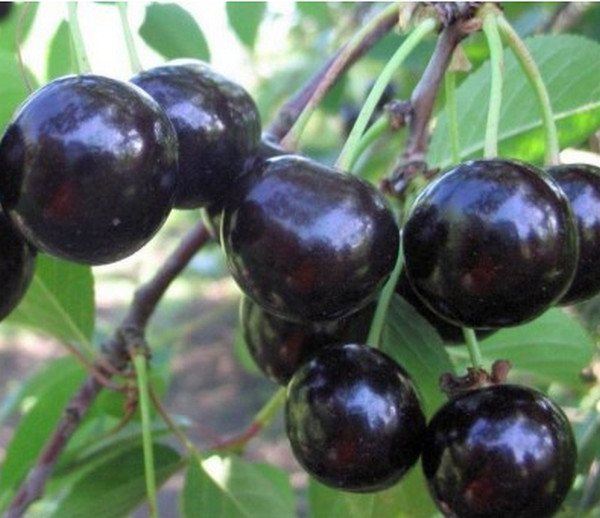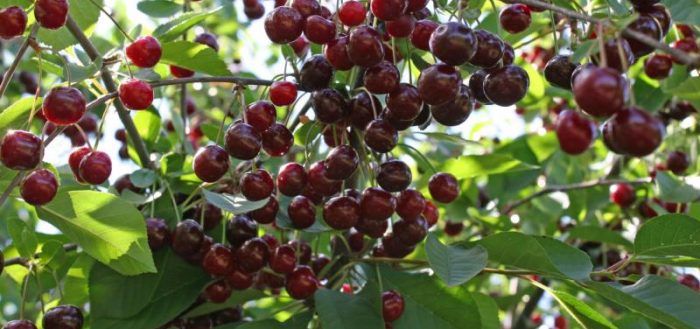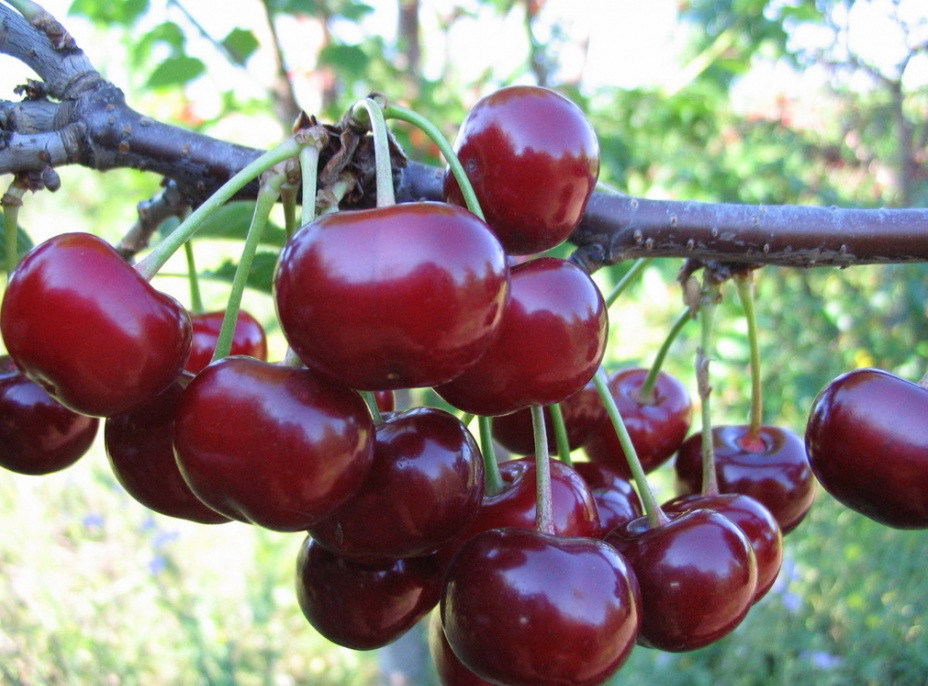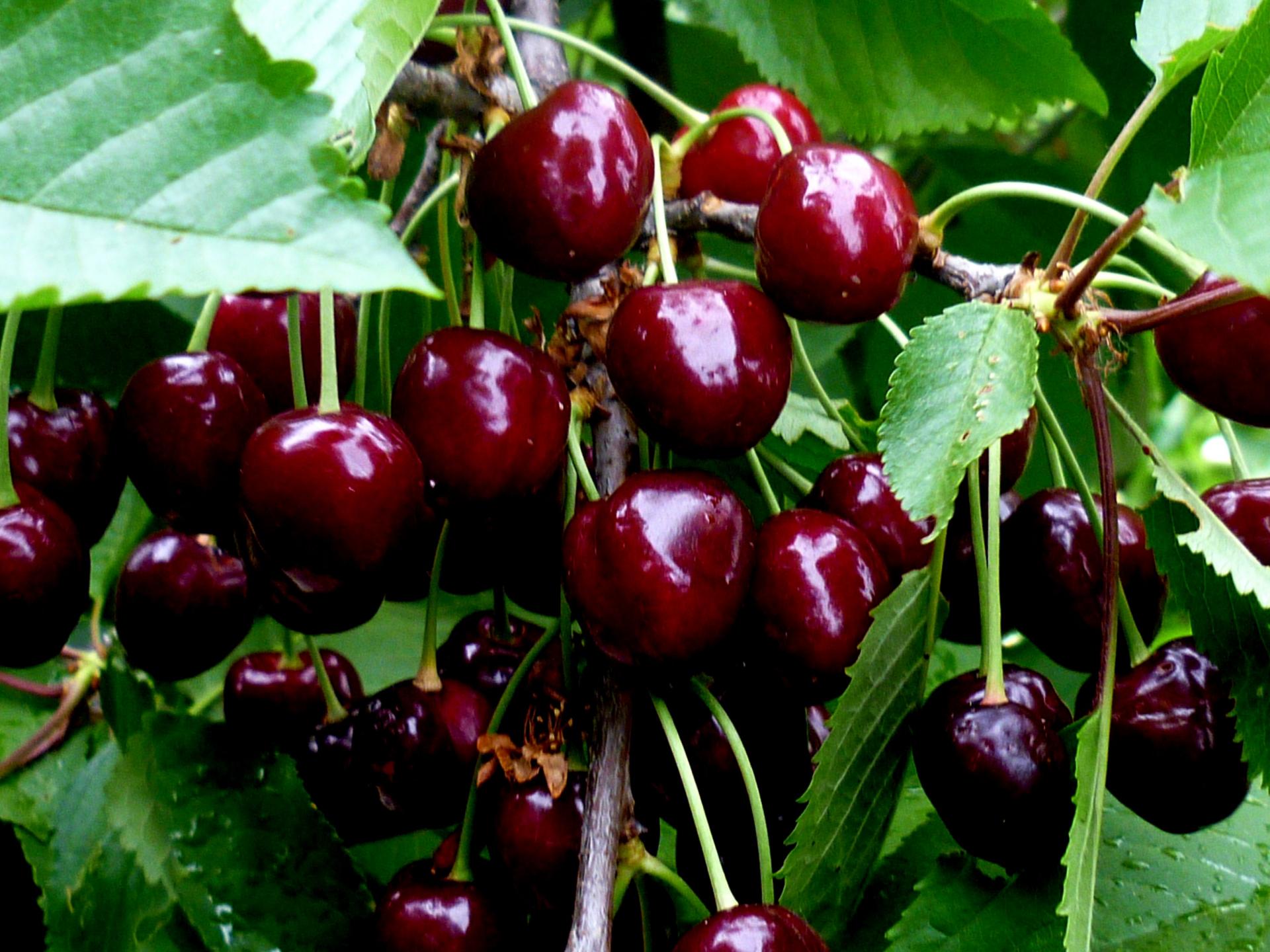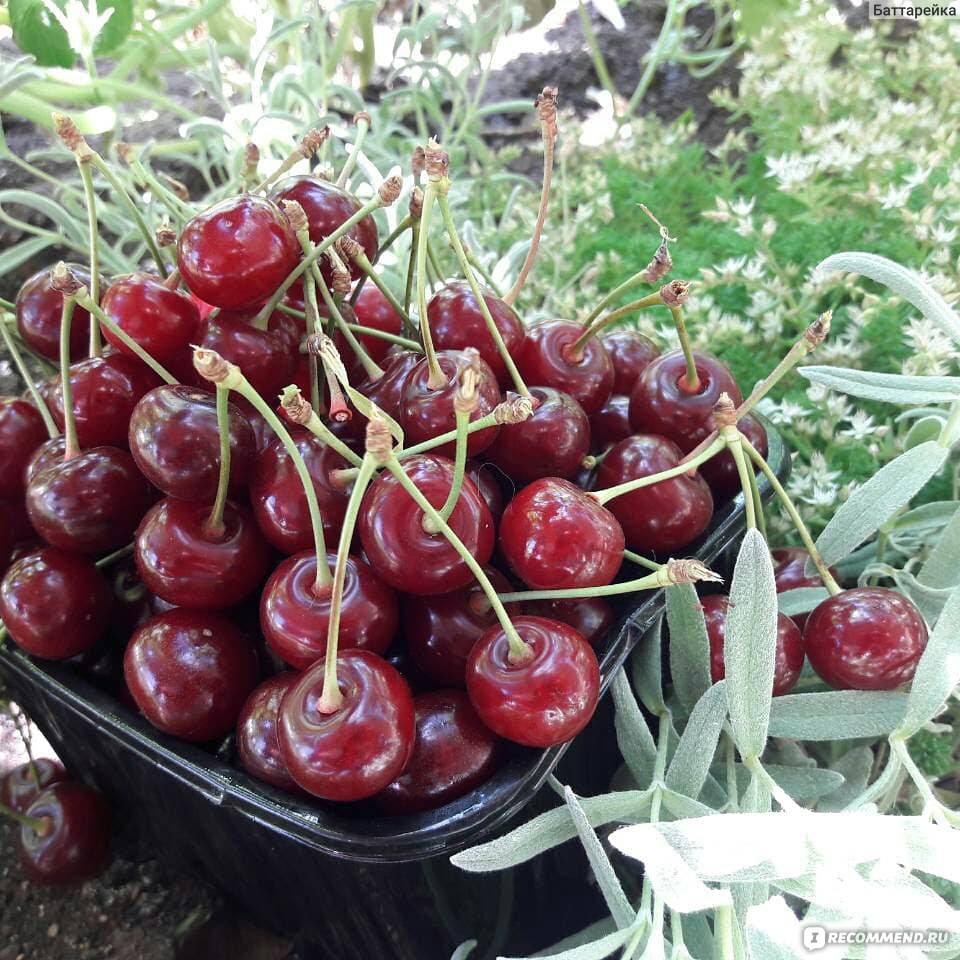Content:
Cherry Brusnitsyna is one of the most popular varieties of stone fruit trees; it can be found in many summer cottages. The main characteristics of the variety, the cultivation of this variety "from scratch", as well as the main pros and cons of the variety - all this will be discussed below.
The history of the creation of the variety
This variety is the fruit of folk selection. Brusnitsyna's cherry grows everywhere in many garden farms, but it has not been included in the State Register of our country.
The improvement of its main characteristics was carried out by ordinary gardeners, thanks to whose efforts many indicators have now improved in the fruit tree, in particular frost resistance, yield, and undemanding care.
Description of the Brusnitsyn cherry variety
The yield of this cherry is high - up to 13-14 kg of berries are harvested from one tree. The flowers are self-pollinated, so the tree does not need pollinating insects, nor does it depend on weather conditions during the period of ovary formation.
Another advantage of the variety is its resistance to temperature fluctuations in the growing region. An adult cherry is highly resistant to frost and is also resistant to major diseases that can affect cherry trees.
The Brusnitsyna cherry can reach a height of 1.8-1.95 m. The tree grows most actively in the first season - during this period, the cherry grows to its maximum size and does not grow more in height. In the following seasons, this cherry grows only in breadth - lateral shoots are actively developing, on which crops ripen.
The length of the shoots can reach 37-39 cm. The crown of this tree grows well, the leaves are typically cherry, oblong, with sharp ends, the color is dark emerald.
This variety of varietal cherries should be pruned annually to form a crown. Usually, formative pruning is carried out in the spring, until the buds are swollen.
Fruit characteristics: berries are sweet, slightly sour, juicy, ripe berries weigh up to 5.5 g, rich ruby color. The skin is dense, so ripe berries rarely crack. The small bone is easily separated from the ripe pulp. The ripe fruits of Brusnitsyn's cherry are so large that many often confuse them with cherries.
The fruits of this cherry are universal: they can be eaten fresh, as well as canned - prepare compotes, jam, juices. The harvested crop perfectly tolerates long-distance transportation without losing its presentation and taste. Therefore, Brusnitsyn cherry is suitable for growing for sale. Even rainy weather does not spoil the taste of ripening fruits.
Growing and caring for a tree
This stone tree requires a lot of free space - the distance between this cherry and other trees should be at least 3.2 m. The best area is the western side of the garden, next to a fence or wall of an outbuilding, which will protect the cherry from gusts of strong winds.
You should buy a two-year-old seedling, in this case, you can wait for the first fruits within three seasons after planting the tree.
The best soils are sandy loam, mixed with humus or compost. The soil must be neutral so that the seedlings grow and develop better. If the soil is too acidic, it is better to add lime or dolomite flour in advance.
The place should be sunny and without moisture stagnation - groundwater should not approach the earth's surface closer than a meter.
This variety is often grown in the Urals or Siberia, where winters are harsh. In these regions, trees are best planted near outbuildings, which will serve as natural shelter for fruit trees.
The seedling is planted in pre-fertilized soil. Before planting a tree, you need to inspect its root system: there should be no damage and growths on it, and the roots should be elastic and healthy.
Before planting a tree, it is placed in a bucket of water for a day so that the roots "come to life".
Cherries are planted from mid-April to the second decade of May, when the soil warms up to a temperature of 15-16 15С.
The depth of the planting hole is 0.65 m, and the diameter is 0.7 m. There should be no other fruit trees around the tree at a distance of up to 3 m, otherwise the crown of Brusnitsyn's cherry will grow incorrectly.
At the bottom of the pit, a layer of organic fertilizers mixed with complex mineral fertilizer is laid out. A stake is driven into the center of the hole, to which the seedling should be tied to protect it from sagging during rains or strong winds.
The root system of the tree is carefully straightened along the diameter of the hole and covered with soil. Then the earth is tamped and watered. At least 30 liters of water is applied under each tree. The root collar should be a couple of centimeters above ground level.
Further cultivation of cherries includes the following care:
- regular watering with subsequent loosening of the soil;
- mulching with sawdust or humus;
- weed removal;
- feeding.
As fertilizers, you can use chicken manure, cow dung (rotted), wood ash, rotted compost.
Harvesting
Since the berries ripen together, they must also be picked in one day. Although ripe berries do not crack or crumble, birds can peck them. Therefore, it is better to harvest the entire crop at once.
The crop tolerates transportation well; it can be kept fresh for some time, without cracking and without losing its taste. Usually these berries are used for freezing, as well as for preparing compotes, jams or juices.
Advantages and disadvantages of the variety
The positive qualities of the Brusnitsyna variety include:
- early maturity;
- high frost resistance;
- self-pollinated variety;
- resistance to major diseases - above average;
- high productivity;
- ripe fruits are not prone to cracking;
- the trees are short so they can be easily cut and harvested.
There are practically no flaws in the variety. True, many gardeners don't like having to do formative pruning every year.
So, if you need a compact, fruitful cherry, the Brusnitsyna variety is an excellent choice!
